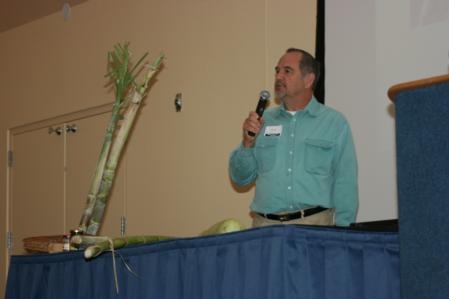From the UC Blogosphere...
Agritourism in agriculture's heartland
Thirty percent of the farmers offering agritourism events supplemented their regular farm income by $50,000 or more in 2008, according to a study by the UC small farm program that was covered on the front page of today's Fresno Bee. Nearly two-thirds of California agritourism operators planned to expand or diversify over the next five years.
"There is no question that there is a lot of potential for growth, and we are seeing it happen," the story quoted Shermain Hardesty, small farm program director and a co-author of the report.
In the article, reporter Robert Rodriguez described several Valley agritourism destinations:
- Visitors can stay the night on the 95-acre tree Dinuba farm of Nori and Mike Taylor.
- Farmer John Olivas lets people pick their own fruit and operates a fruit stand on his three-acre berry farm in Hanford.
- Fresno farmer Mike Smith will allow people to pick their own flowers, lavender and produce on his 40-acre organic farm. In the fall, he will operate a pumpkin patch for the public and school tours.
"We know from all the consumer trends that people are willing to pay for an authentic experience and for specialty foods," said Ellie Rilla, community development adviser for UC Cooperative Extension in Marin County and co-author of the study. "And agritourism provides that."
The research article, California agritourism operations and their economic potential are growing, was published in the current issue of California Agriculture journal.
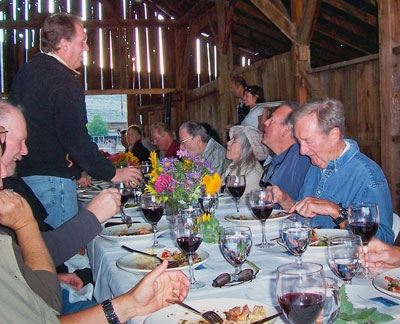
Bringing in visitors for a dinner in a barn is one form of agritourism.
Petal Pushers
Honey bees and daisies are made for each other.The white petals and the golden centers seem incomplete without the presence...
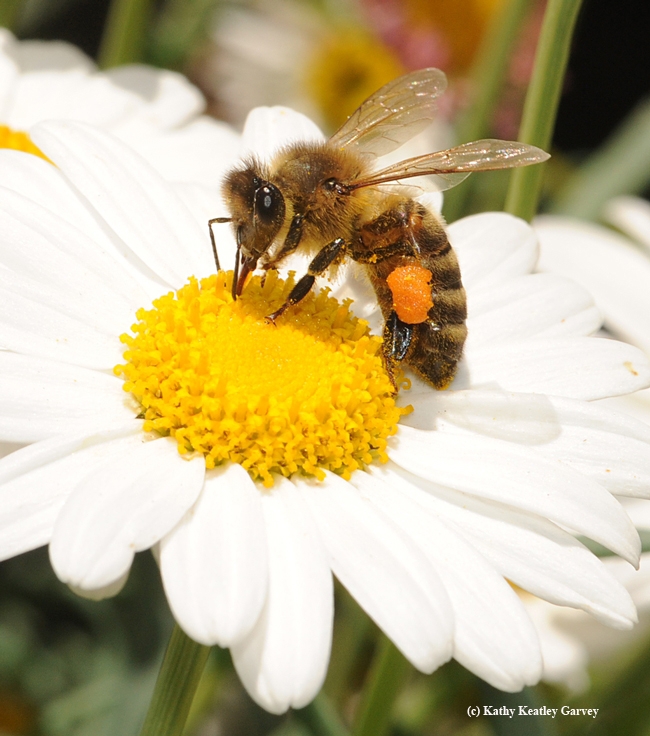
Honey bee foraging on a daisy. (Photo by Kathy Keatley Garvey)
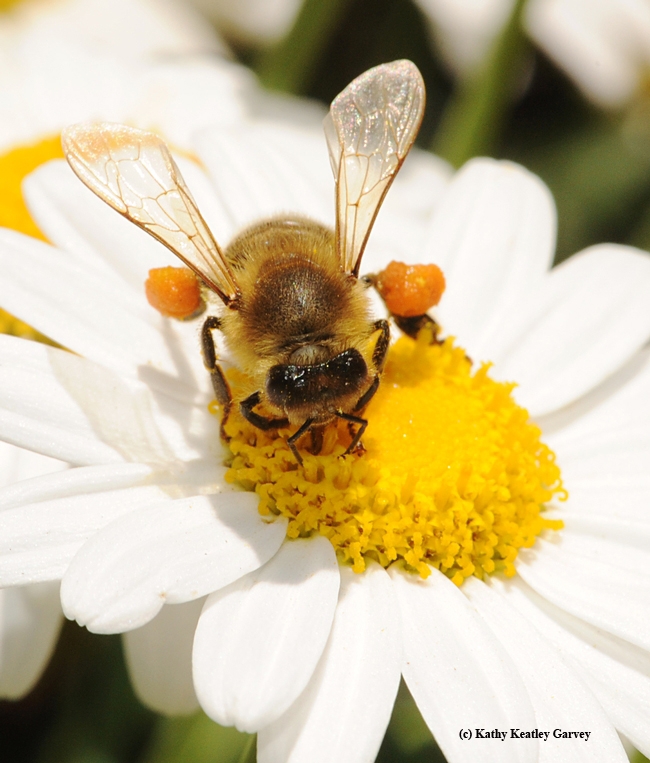
Orange pollen load, the color of autumn pumpkins. (Photo by Kathy Keatley Garvey)
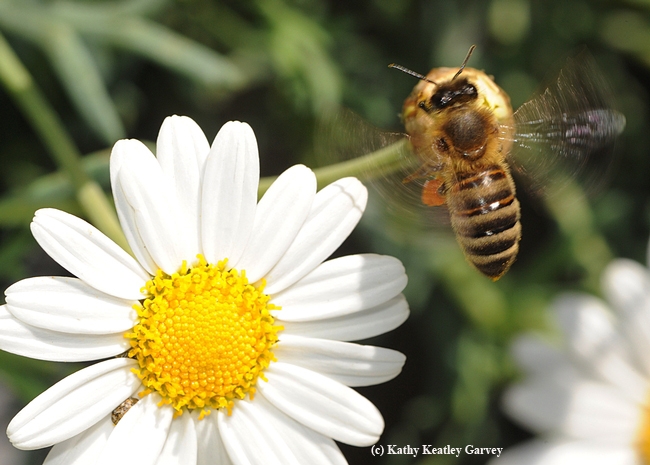
Buzzing, the honey bee leaves the daisy. (Photo by Kathy Keatley Garvey)
Dan Sumner a part of NY Times animal cruelty debate
New laws were proposed this spring in Iowa, Minnesota and Florida that would make it a crime to take undercover videos or photos at industrial farms, a tactic often used to show mistreatment of animals and unsanitary conditions, the New York Times reported.
In response to this development, the Times invited nine experts to debate issues related to farm animal welfare. The director of the UC Agricultural Issues Center, Dan Sumner, took part in the discussion, noting that in addition to legal and moral questions, there are economic issues worth considering.
In his essay, titled Economics in the Hen House, Sumner outlined Proposition 2, a law voters approved in 2008 that ends the use of conventional cages in California egg production by 2015. Sumner said the new law will ban eggs that 95 percent of buyers now choose - less expensive, conventionally produced eggs - and allow only more expensive "free range chicken" eggs, which are already available, but rejected by the vast majority of shoppers.
He believes the use of graphic images in the campaign detracted from an informed policy debate about the potential impacts of Proposition 2. Emotional appeals with ugly images can sway a public debate, he said, while noting that farmers also use their own favored images to garner support for farm policy.
"A picture may be worth a thousand words, but sometimes a few numbers and some evidence may be worth even more," Sumner concluded.

Hen house living conditions are part of the animal welfare debate.
Not Waxing Poetic
Ever seen a wax builder?A "real" wax builder?Bee breeder-geneticist Susan Cobey and beekeeper-research associate Elizabeth...

Flakes of wax on a wax builder. (Photo by Kathy Keatley Garvey)
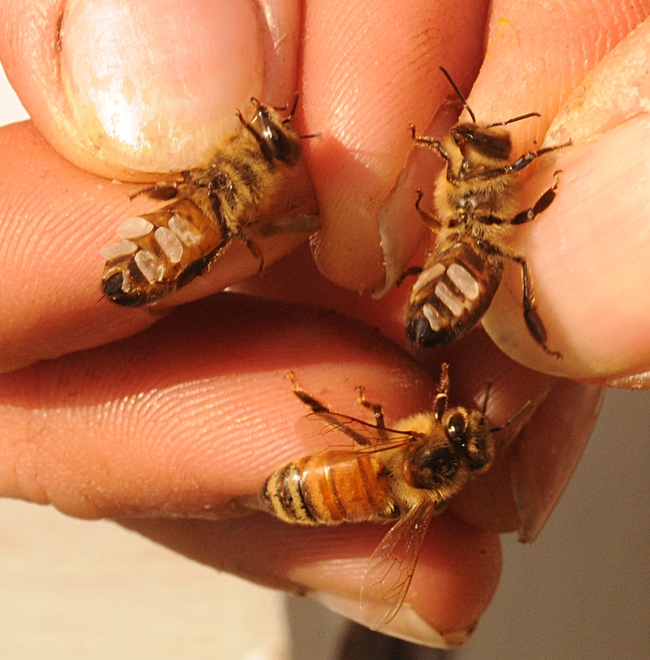
Two wax builders and their sister on the hand of Susan Cobey. (Photo by Kathy Keatley Garvey)
UC helps small scale farmers ensure food safety
A heightened awareness of food safety has processors, retailers and consumers demanding that farmers use practices that can be verified as safe, the Fresno Bee reported yesterday. The story focused on the challenges these demands pose for small-scale farmers.
Bee reporter Robert Rodriguez spoke to the owner of an eight-acre Fresno County farm.
"We have been farming for 40 years and have never had a problem, but now we have to document, document, document. I almost burned out my copy machine," the farmer was quoted.
To help growers develop written food safety plans, UC Cooperative Extension small farm advisor Richard Molinar is holding training seminars in English, Spanish and Hmong.
"We knew that the retailers were asking the packinghouses and wholesalers for the food-safety documents and they were beginning to start asking it from the farmers," Molinar was quoted. "They wanted to see written policies in place."



